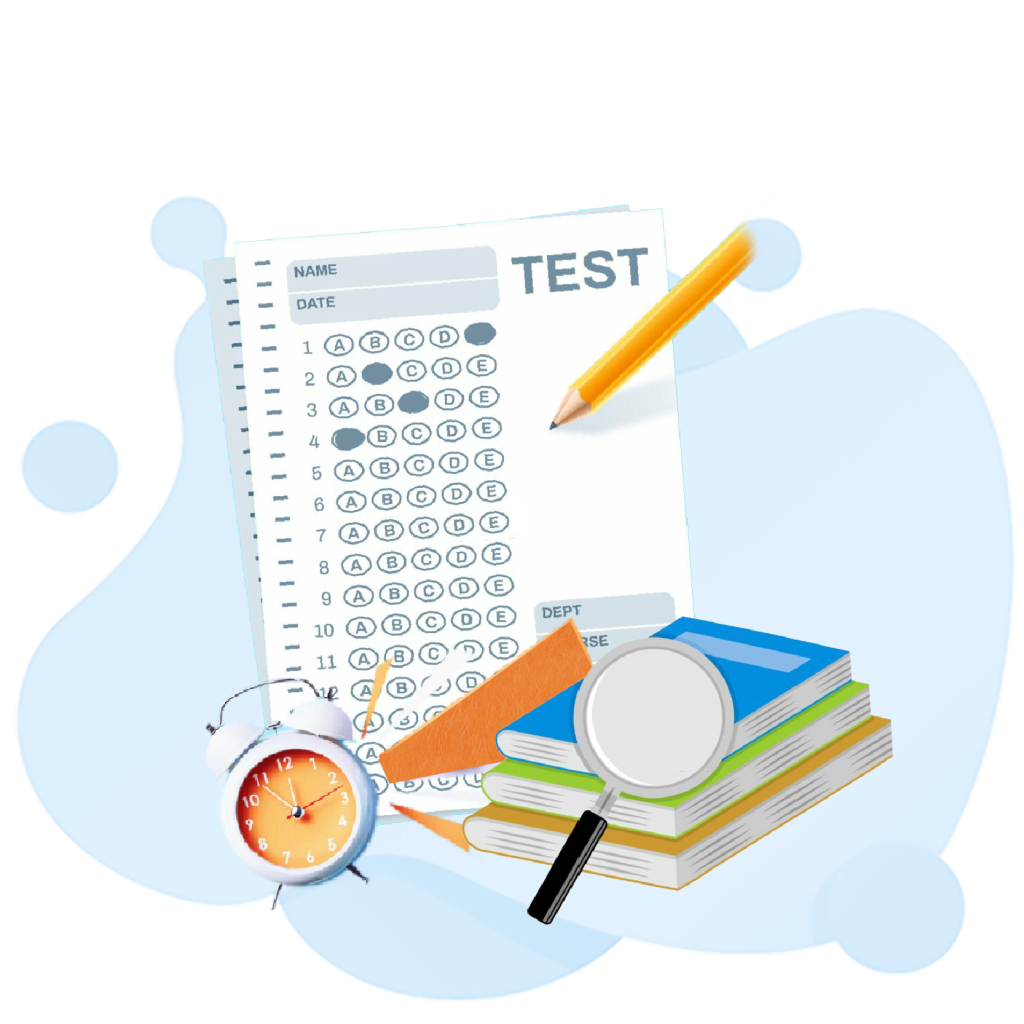Terranova Practice Test 2025

The TerraNova test is a widely used standardized test that assesses students’ knowledge and skills in various subject areas. It serves as an important tool for educators to evaluate their students’ academic progress and identify areas where they might need additional support or instruction. However, some critics argue that the emphasis on standardized testing undermines the true purpose of education and limits teachers’ ability to provide a holistic learning experience.
TerraNova Test Results
The release of TerraNova test results is always a highly anticipated moment for educators, administrators, and students alike. It serves as a valuable benchmark to assess student progress, instructional effectiveness, and overall school performance. However, simply focusing on the scores fails to capture the full picture.
While the numbers may reveal areas that need improvement or highlight exceptional achievement, it is vital to consider the context in which these results have been obtained. Factors such as socioeconomic background, access to resources, and even demographics can significantly impact test outcomes. Therefore, a more comprehensive approach should be taken when interpreting TerraNova test results to ensure an equitable assessment that accounts for these external factors.
Additionally, placing too much emphasis on standardized tests like TerraNova risks undermining other essential aspects of education. A one-size-fits-all approach neglects the diverse talents and strengths that students bring into the classroom. Creativity, critical thinking skills, problem-solving abilities – all these qualities are not adequately reflected in standardized testing but play crucial roles in preparing students for real-world success.
By considering these fresh perspectives alongside TerraNova test results – acknowledging their limitations while recognizing their value – educators can better craft strategies that foster holistic growth among their students. It is when we balance data-driven decisions with individualized instruction and a focus on developing well-rounded individuals that we truly empower our next generation of thinkers and leaders beyond what any number on a report can signify.
TerraNova Test Scores Interpretation
Understanding and interpreting TerraNova test scores is vital for educators, parents, and students. These scores not only provide a snapshot of a student’s academic performance but also help identify areas of strengths and weaknesses. It is essential to view these scores as one piece of the puzzle rather than the sole indicator of a student’s abilities.
One aspect to consider when interpreting TerraNova test scores is the norm-referenced nature of these assessments. These tests compare an individual student’s performance to that of a national sample or norm group. While this can give valuable insights into how a student compares to their peers on average, it does not reflect their potential growth or future success. Therefore, it is crucial not to solely rely on these scores but instead use them in conjunction with other data points such as classroom performance and teacher evaluations.
Furthermore, understanding the subtest score breakdown can provide deeper insights into a student’s strengths and weaknesses across different subject areas. By analyzing these subtest scores, educators can tailor instruction more effectively by targeting specific areas where additional support may be needed or fostering advanced learning opportunities in areas where students excel. Moreover, incorporating growth mindset principles can empower students by emphasizing that scores are not fixed measures but rather an opportunity for continuous improvement and personal growth.
In conclusion, while TerraNova test scores offer important information about students’ academic abilities relative to peers nationwide, they should be viewed holistically in the context of overall achievement, classroom behaviors, and teaching practices. By recognizing that test results are just one piece of the puzzle, educators can better support students’ individual growth and development. This holistic approach to assessing student performance promotes a more comprehensive understanding of their abilities and potential.

TerraNova Test Prep
TerraNova test prep is crucial for students aiming to excel in their academic journey. Whether it’s for kindergarten or high school, these exams assess a student’s knowledge and understanding in various subjects. One of the keys to success in TerraNova testing is familiarizing oneself with the format and content of the exam, which can be achieved through thorough preparation.
A comprehensive TerraNova test prep program goes beyond simply practicing sample questions. It includes a deep dive into the subject matter, critical thinking skills development, and effective test-taking strategies. By focusing on these areas, students can build their confidence and perform at their best during the actual exam.
Additionally, incorporating different study techniques into your TerraNova test prep can enhance learning and retention. For example, forming study groups with classmates offers collaborative learning opportunities where students can discuss concepts and exchange insights. Furthermore, utilizing online resources such as interactive quizzes or educational games can make studying more engaging and enjoyable.
In conclusion, preparing for the TerraNova test requires a well-rounded approach that delves into content review, critical thinking skills development, effective test-taking strategies along with interactive learning methods like study groups and online resources. By investing time and effort into comprehensive preparation methods, students are more likely to achieve their desired results on these important exams and feel confident in their abilities. Additionally, it is important for students to establish a study schedule and stick to it consistently. This will help them stay organized and focused on their goals.
Another crucial aspect of preparing for the TerraNova test is practicing time management during the actual exam. Students should familiarize themselves with the format and structure of the test to know how much time they can allocate to each section. By practicing timed exercises, students can improve their efficiency in answering questions within the given time constraints.
TerraNova Standardized Test
The TerraNova standardized test is a widely-used assessment tool that measures students’ academic abilities and progress across various subjects. However, it has attracted controversy due to its emphasis on rote memorization and limited focus on critical thinking skills. Critics argue that this approach stifles students’ creativity and problem-solving abilities, as it encourages them to simply regurgitate information instead of truly understanding concepts.

Another contentious aspect of the TerraNova test is its potential to perpetuate educational inequalities. Research has shown that students from low-income backgrounds tend to perform worse on standardized tests like the TerraNova compared to their peers from more affluent communities. This raises concerns about whether the test truly reflects a student’s intelligence or if it simply assesses their access to quality education resources.
Despite these criticisms, proponents argue that the TerraNova Test provides valuable data about individual student performance and helps educators identify areas for improvement in both curriculum and teaching methods. They believe that by using these assessments strategically, schools can make informed decisions about how best to support their students’ needs and track progress over time.
In conclusion, while the TerraNova standardized test may have its flaws, it serves as an important tool for educators in evaluating student performance. However, there is a need for moderation in relying solely on such tests as indicators of a student’s capabilities or potential. Ultimately, we should strive to create an education system that values critical thinking, creativity, and holistic development rather than reducing success solely to numerical scores on standardized tests.
TerraNova Test Online
TerraNova Test Online is revolutionizing the way students and educators approach standardized testing. With its user-friendly interface and comprehensive assessment tools, this online platform offers a seamless testing experience while delivering accurate and detailed results. Gone are the days of filling out bubble sheets; now, students can take the TerraNova test from anywhere with an internet connection.
The convenience of TerraNova Test Online extends beyond accessibility. This innovative platform also provides real-time feedback, allowing educators to identify areas where students may need additional support or intervention. With immediate access to individual student performance data, teachers can make informed instructional decisions that cater to each student’s unique needs. Additionally, this platform offers personalized learning recommendations based on a student’s test results, further enhancing their academic growth.
Rather than being solely focused on evaluating knowledge retention, TerraNova Test Online emphasizes critical thinking skills and problem-solving abilities. By incorporating more complex questions that require higher-order thinking, this test encourages students to apply concepts in meaningful ways. Students must demonstrate their ability to analyze information, think creatively, and communicate effectively – skills that are crucial for success in today’s ever-evolving world.
In conclusion, TerraNova Test Online serves as a game-changer in the realm of standardized testing. From its intuitive design and real-time feedback capabilities to its emphasis on critical thinking skills development, this online platform empowers both students and educators alike. As technology continues to reshape education practices around the globe, it comes as no surprise that TerraNova Test Online has quickly become an essential tool for measuring student achievement and progress. The convenience and accessibility of an online platform allow students to take the test at their own pace and in a familiar environment, reducing test anxiety and ensuring accurate results.

How Long Is the TerraNova Test
The length of the TerraNova Test, a standardized assessment used in many schools across the United States, depends on various factors. Typically, time allocations for each section of the test range from 30 to 60 minutes. The test is divided into multiple sections, including reading comprehension, language arts, mathematics, science, and social studies. Each section consists of a different number of questions and has its own allotted time frame.
Considering that the TerraNova Test encompasses various subjects within its sections, it is crucial for students to pace themselves effectively throughout the exam. Moreover, by understanding how much time they have for each section, students can prioritize their efforts and allocate more time to areas where they might excel or need extra support.
It’s essential to note that while there are general guidelines regarding the duration of each section in the TerraNova Test, specific schools or districts may have slightly different timing standards. Therefore, it is advisable for students preparing for this test to consult with their teachers or school administrators to get accurate information about timing expectations before taking the exam. By being well-informed about these details beforehand and practicing under similar conditions during preparation exercises can significantly contribute to a student’s success on test day.
TerraNova 3 Test Guide
The TerraNova 3 test is an assessment tool that provides valuable insight into a student’s academic abilities and progress. It covers various subjects such as reading, language arts, mathematics, science, and social studies. However, preparing for this test can be overwhelming for both students and parents. That’s where the TerraNova 3 Test Guide comes in handy.

This comprehensive guide offers detailed information about the content and structure of the test, along with sample questions and practice tests to help students familiarize themselves with the format. It also includes strategies for effective time management during the exam and tips on how to approach different question types. One unique aspect of this guide is its focus on critical thinking skills development, which is integral to performing well in all sections of the TerraNova 3 test.
Whether your child is preparing for their first TerraNova 3 test or looking to improve their scores from previous attempts, using a reliable and up-to-date guide can significantly enhance their performance. The TerraNova 3 Test Guide equips students with essential tools to navigate through various subject areas effectively while honing crucial problem-solving abilities. With proper preparation using this guide as a resource, students will feel more confident when taking the actual exam and demonstrate their true capabilities in academics.
Additionally, the TerraNova 3 Test Guide provides comprehensive explanations and examples for each section of the test, ensuring that students understand the underlying concepts and strategies needed to excel. From reading comprehension and language arts to mathematics and science, this guide covers all subject areas in a clear and concise manner.
TerraNova Math Test
The TerraNova Math Test is a comprehensive assessment tool that has become increasingly popular in schools across the country. Designed to measure students’ understanding of various math concepts, this test provides invaluable insights into their strengths and weaknesses in the subject. One of the key features that sets the TerraNova Math Test apart from other standardized tests is its emphasis on critical thinking and problem-solving skills.
Unlike other math tests that focus solely on rote memorization of formulas, the TerraNova Math Test encourages students to think outside the box and apply their knowledge in real-world scenarios. This approach not only challenges students but also helps them develop essential skills necessary for success in higher education and future careers. By presenting questions that require logical reasoning and creative problem-solving techniques, this test allows educators to gauge not only how well students can perform specific calculations but also how effectively they can apply their mathematical knowledge.
Another notable aspect of the TerraNova Math Test is its adaptive nature. As students progress through each section, the difficulty level adjusts based on their responses. This means that every student experiences a unique and personalized assessment based on their individual abilities. By tailoring the test to each student’s skill level, educators gain a more accurate understanding of their mathematical aptitude while also empowering students with a sense of accomplishment as they tackle increasingly challenging problems.
In conclusion, the TerraNova Math Test offers valuable insights into students’ critical thinking skills while promoting creativity and adaptability in problem-solving. Its emphasis on real-world application sets it apart from traditional math assessments, making it a more comprehensive and practical tool for evaluating students’ mathematical abilities. By presenting students with realistic scenarios and challenging them to think outside the box, the TerraNova Math Test effectively prepares them for solving complex problems in their academic and professional lives.